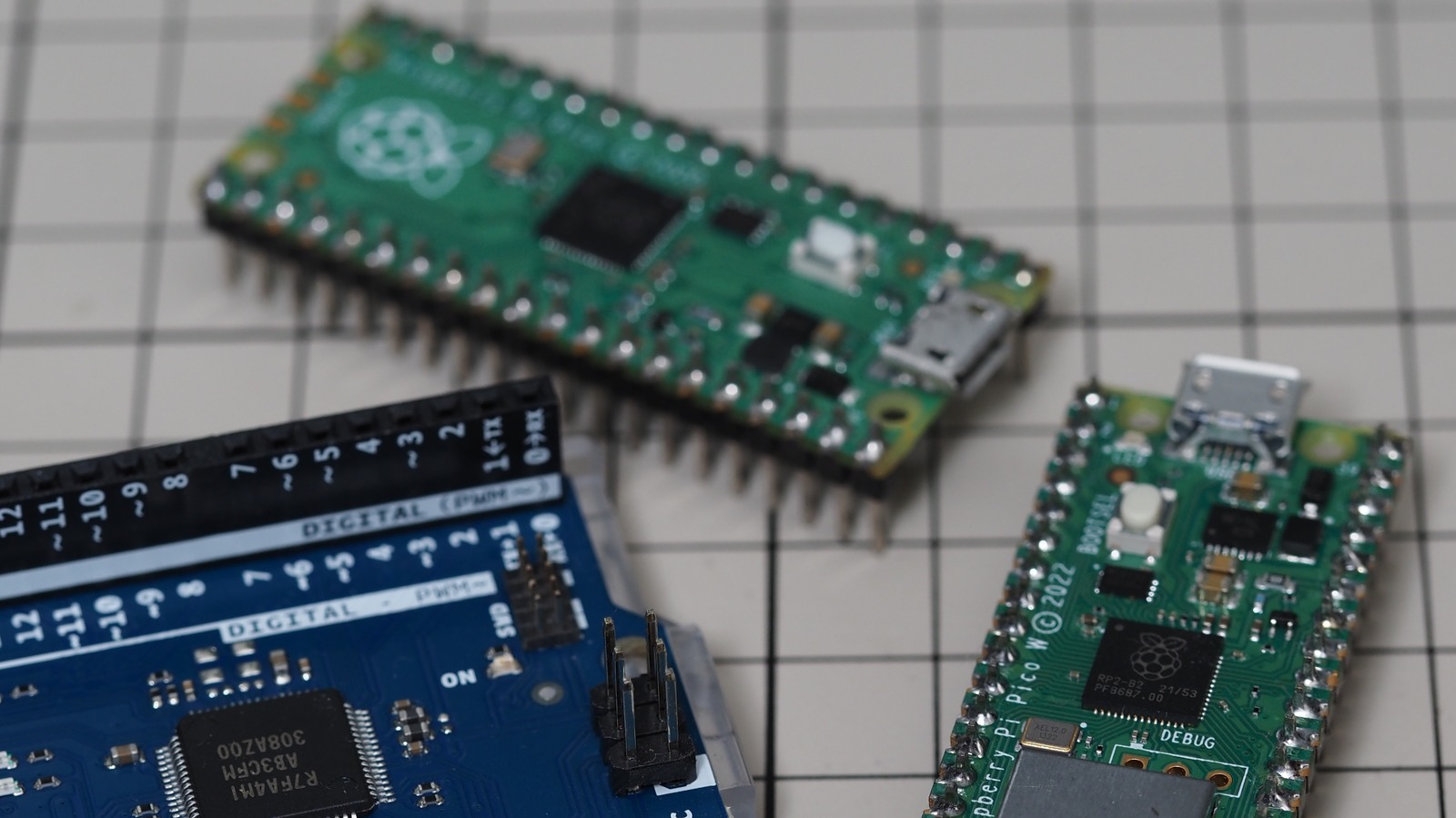
The Arduino Nano is powered by an Atmel ATmega328. It’s an 8-bit AVR microcontroller that operates at a clock speed of 16 MHz and comes with 2 KB SRAM, 1 KB EEPROM, and 32 KB flash memory. The bootloader, however, occupies 2 KB of the flash memory, so you essentially have 30 KB of usable space left for your sketches.
The Raspberry Pi Pico is fitted with the Raspberry Pi-made RP2040 chip. It features two processor cores capable of running from 48 MHz up to 133 MHz – This is a huge performance leap from the Nano. The Pico’s microcontroller memory is significantly larger too. Its embedded ROM, which stores the flash boot sequence, initial startup and flash programming routines, and utility libraries, has a capacity of 16 KB, and the embedded SRAM, where your code and its required data are stored, stands at a substantial 264 KB. While the RP2040 has no integrated flash memory itself, the Pico includes 2 MB of onboard flash memory to complement the microcontroller chip. What also sets the RP2040 apart are its two built-in features: a real-time clock (RTC) that provides accurate date and time, and a voltage-dependant temperature sensor.

